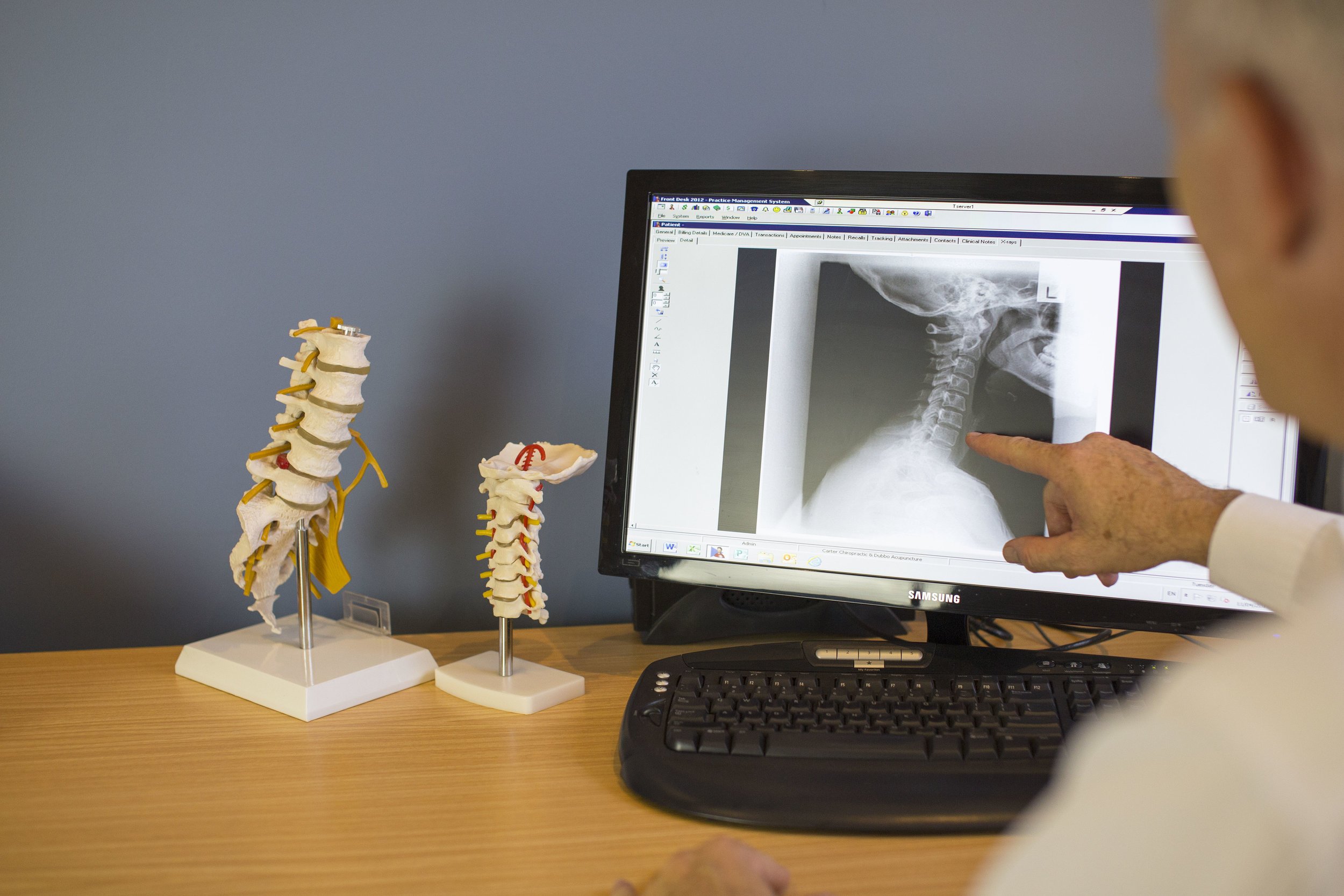Common Chiropractic techniques and what they do
Diversified manual adjusting
The Diversified technique is one of the most commonly practiced techniques, not just by our doctors, but by chiropractors around the world. The Diversified technique involves your chiropractor manually placing pressure through the affected vertebral segment in order to restore proper movement. Diversified adjustments involve the delivery a quick and short thrust to the restricted joints, either by hand or with the assistance of a table. This technique is delivered at a precise angle, depth, direction and speed, which is determined through years of practice, experience, education, and diagnostic expertise. This technique is an effective way of relieving stiffness and pain. It is also the technique most commonly associated with a “popping” noise, which is simply gas being released from the joint as it is unlocked.
Activator (very gentle)
Very gentle and suitable for babies, young children and the elderly.
The Activator Technique of chiropractic adjustment is the most popular method next to the Diversified Technique. More than 50 percent of all chiropractors use Activator.
The Activator will be placed against your skin in the location where the adjustment is to be performed. Then, our chiropractor will trigger the Activator. The spring loaded Activator device will deliver a gentle force to the location that will push the vertebrae or joint back into its proper position. This restores movement and reduces inflammation and pain.
Neuro Emotional technique
Neuro Emotional Technique, or NET for short, is a chiropractic technique for resolving emotional stress and trauma that can also manifest as physical symptoms in the body. NET was developed by chiropractor Dr Scott Walker in the USA and has grown into what it is today with the help of his wife and co-developer, Dr Deb Walker. This holistic technique addresses physical and emotional imbalances via the meridian system and its effect on nerves and other parts of the body. It also uses homoeopathy to help integrate the treatment and to create long term positive changes in all aspects of health.
Thompson/drop piece adjusting (light force)
The Thompson Technique is a full-spine adjusting technique that emphasizes high-velocity, low amplitude, and low-force procedures. The chiropractors use a specialised drop piece table to deliver specific adjustments to improve spinal function and pain. With this technique you will not hear the crack or pop associated with classical chiropractic adjusting, however it produces the same rapid joint movement that allows chiropractic adjustments to reduce pain.
Gonstead technique
While we use elements of the Gonstead Chiropractic technique, we also combine this with a variety of other techniques, depending on your case and what we think the best treatment options may be. During treatment, Gonstead sytem chiropractors avoid twisting the spine. Instead, practitioners use precise movements to adjust specific vertebrae. Another difference between the Gonstead system and other techniques is that neck adjustments are made in the seated position.
Myofascial release therapy
To support chiropractic adjustments or to relieve the source of pain if it is coming from muscles, the chiropractor will release muscle tension with specific pressure therapy onto areas of focal muscle spasm, called trigger points, or perform specific massage to a muscle to release tension in it and the pain.
Mechanical blocking (very gentle)
Blocking involves the placement of specific wedges under the pelvis, this is done in such a way as to remove roation from the pelvic joints associated with sacroiliac joint dysfunction and pain. Its an extremely light force relying on your body weight and gravity to slowly realign the pelvis.
Applied Kinesiology
Applied Kinesiology is a unique health care system because it recognises that appropriate body mechanics, biochemistry and emotional health are fundamental to optimal health.
Your nervous system monitors and coordinates all your body interactions. On that basis, the Applied Kinesiology practitioner uses muscle testing to assess your nervous system function and find a solution to your health concerns. The technique then involves the use of any of the above chiropractic techniques to manage the problem.
Rehabilitation exercises
To support your recovery and assist in prevention we realize the importance of rehabilitation and supportive exercises. Our chiropractors will offer you tailored exercise plans for your specific condition along with advice on ergonomic and postural changes you can make to enhance your recovery and stop pain retuning.
We have teamed up with a world class evidence based team, ChiroUp, to provide exercises we email you ( we can also print them if you prefer) that have videos to help you perform them correctly and an phone App you can use to help you.

Book your appointment online with ease
Available for both new and existing patients




